Our (third floor walkup) condo has no entryway, no pantry, and a single hallway closet. This tiny 3’8”x3’3” closet is the most utilized square footage in our home and has an enormous number of functions to fulfill.
Here’s the before. This setup was failing our family and desperately needed some intentional planning to improve.
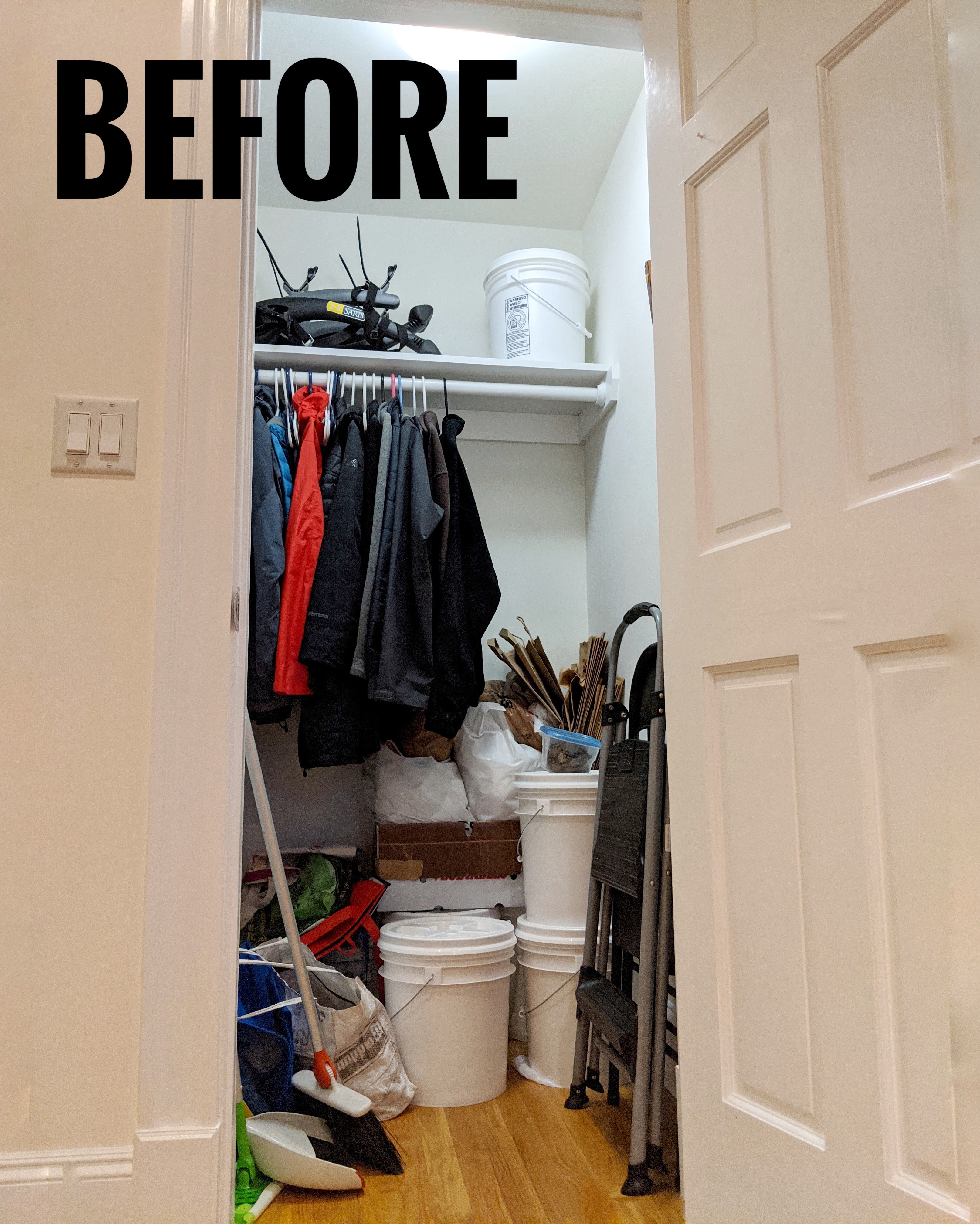
These were the requirements (at the time, and for planning ahead):
Kids’ independently get and put away
- stepstool

- their own backpacks

- their own coats/hats/mittens



- some food while helping in the kitchen


Adults’ (easy/fast) access requirements
- get and put back
- coats/hats/mittens



- cloth/plastic bags

- ingredients while cooking


- broom and dustpan for quick cleanup (IYKYK)

- extra folding chairs for (sometimes spontaneous) guests

- coats/hats/mittens
- know what food we have and what we are running low on
- stash plastic packaging for eventual recycling

Additional storage requirements
- backstock and overflow (bulk) food
- oversized appliances and seldom-used cookware

- extra paper towels, sponges, trash bags


That’s a long list! Space planning and optimization takes real effort, but the payoff is totally worth it for improving the efficiency of everyday life.
Here’s how our closet looks now! ![]()
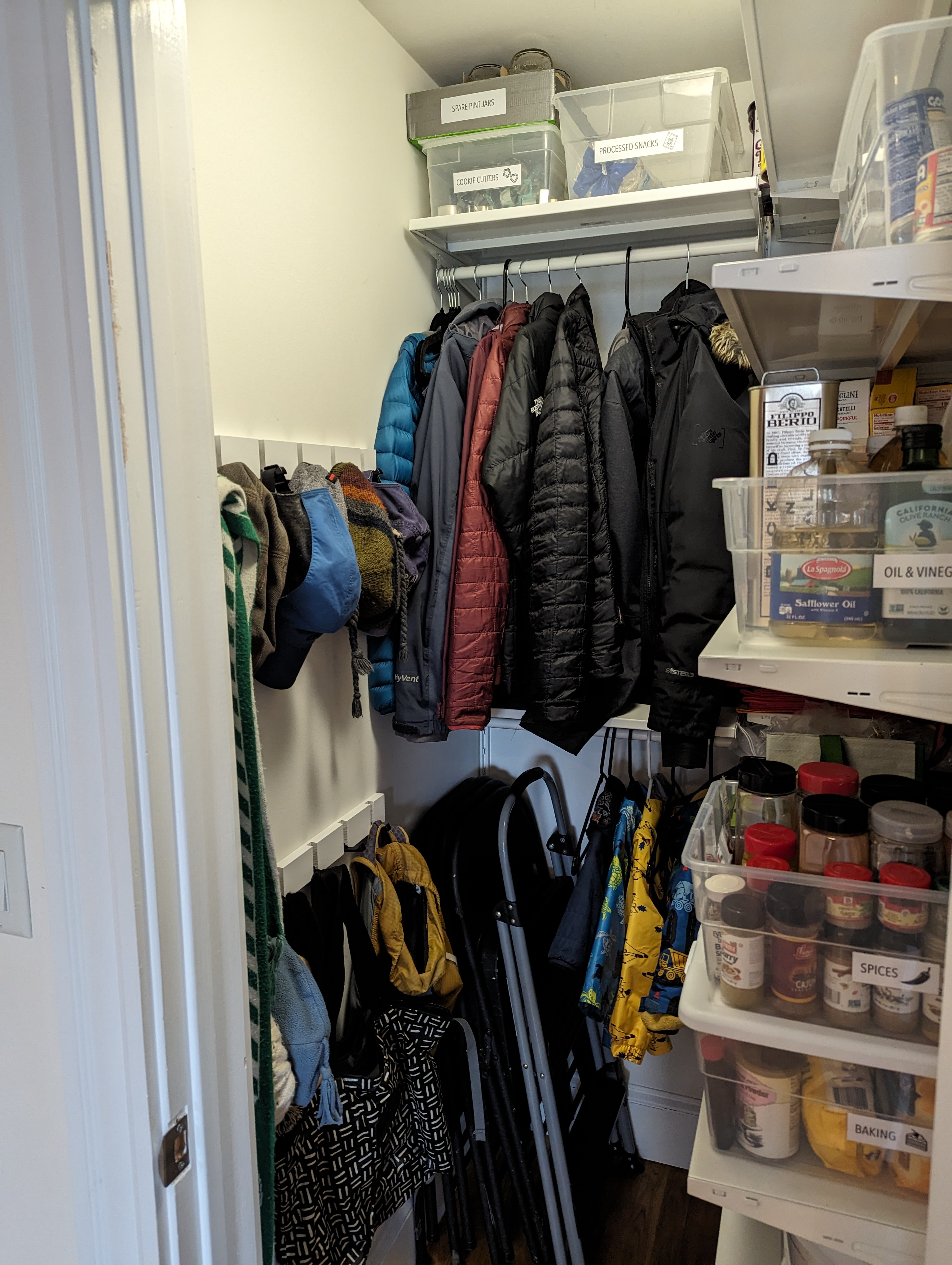
The Details
I hung the broom, dustpan, and Swiffer (used primarily to fish toy cars out from under couches) and a plastic bag dispenser directly on the back of the closet door.
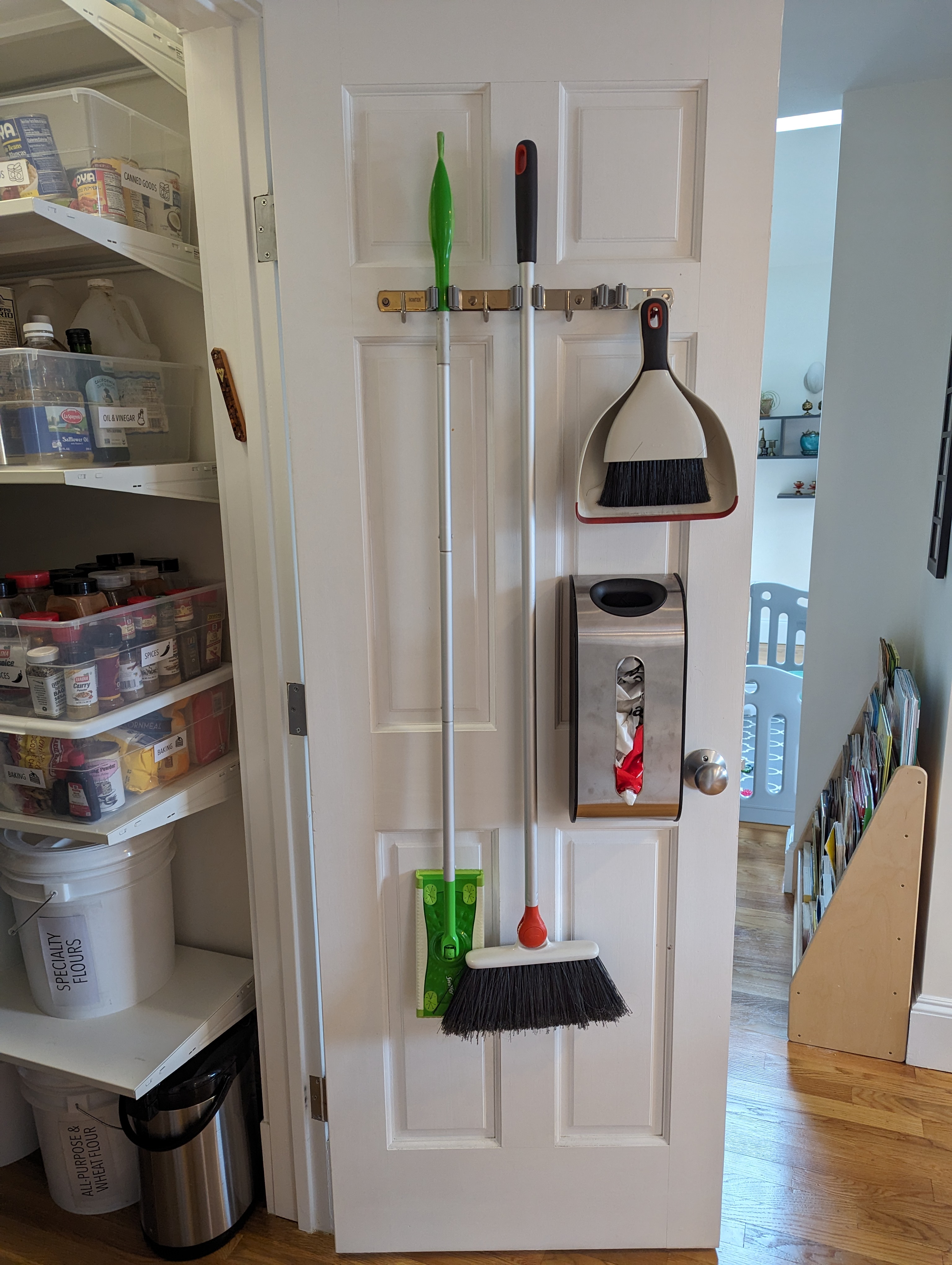
I also installed two rows of hooks. The bottom row is low enough for the kids to access. These hooks fold back to save space and avoid clobbering your back when you’re facing the other way.
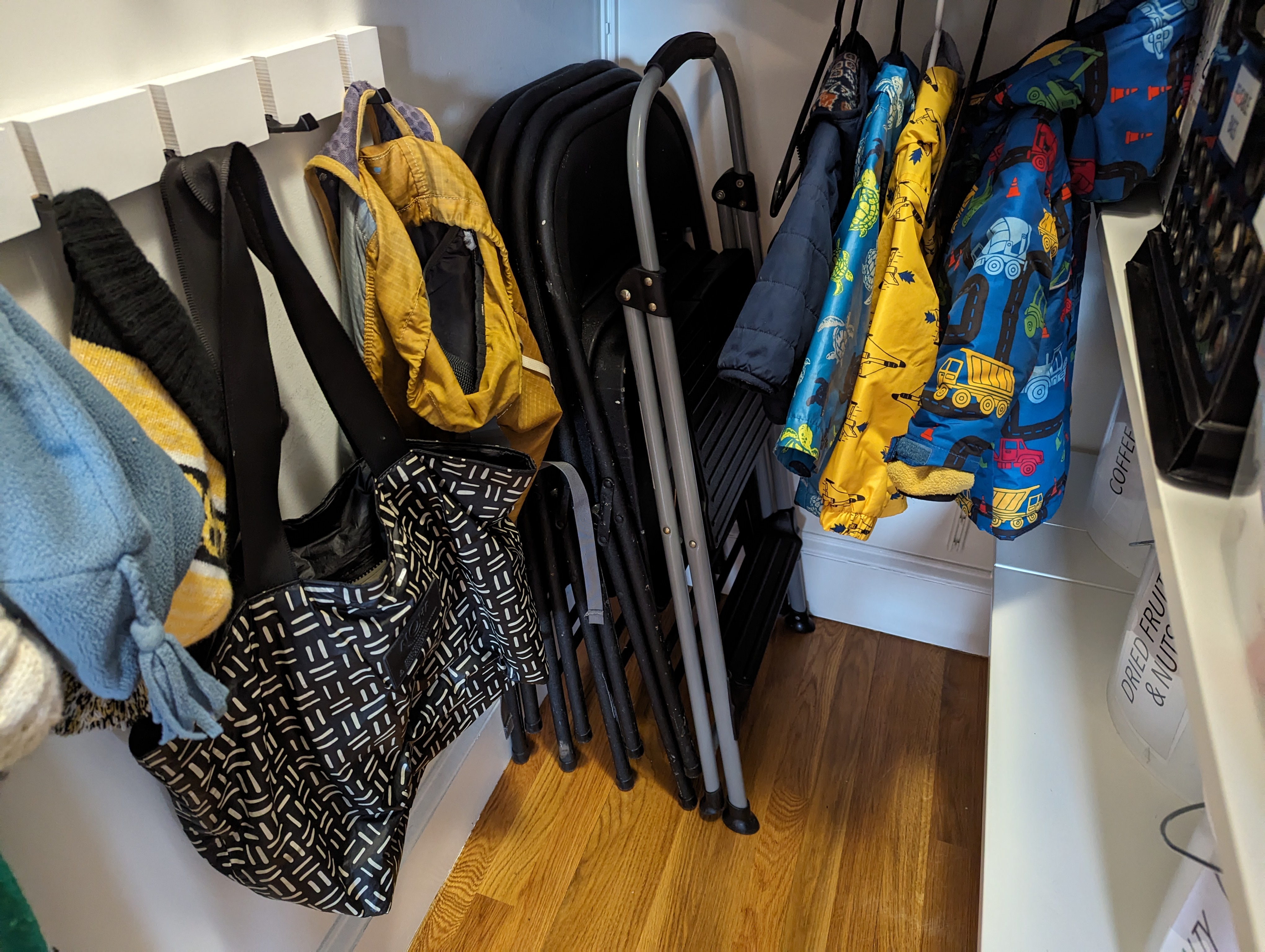
The stepstool is also accessible to our toddler and the folding chairs accessible for the grown-ups.
Bulk food storage was essential during the pandemic when the grocery options were buy (1) a restaurant-supply quantity or (2) nothing. These days, we’re using these large food-safe bins with gamma-seal lids (see below) for storing all sorts of dry goods, and they’re great! I cut some transparencies to make pockets (and cover the ugly “don’t fall in” warning labels), then slid labels in.

Clear plastic bins are the most effective solution for being able to immediately see what we have (and what we’re low on). These have near-infinite reuse potential (so I’ll never throw them in the garbage), and wasting a bunch of food that was hidden and forgotten about isn’t so environmentally-friendly, either.
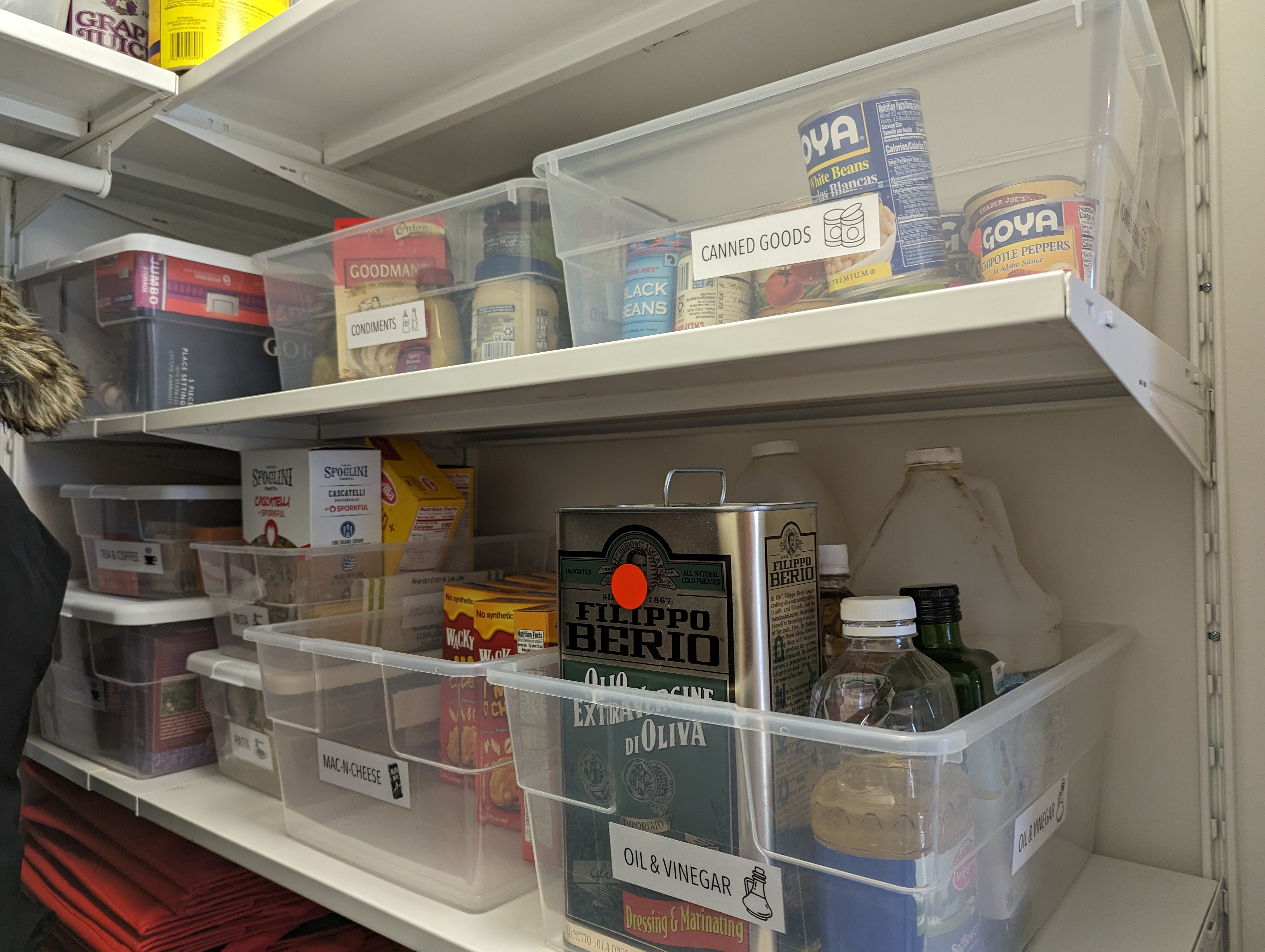
Also c’mon, don’t you love my labels with the little ICONS?! The idea came to me when organizing my (pre-reading) 2-year-old’s toys, but these seem to be easier for me (and random guests) to read, too!
Here’s another angle to show you how we store plastic recycling (left) and reusable grocery bags (right):
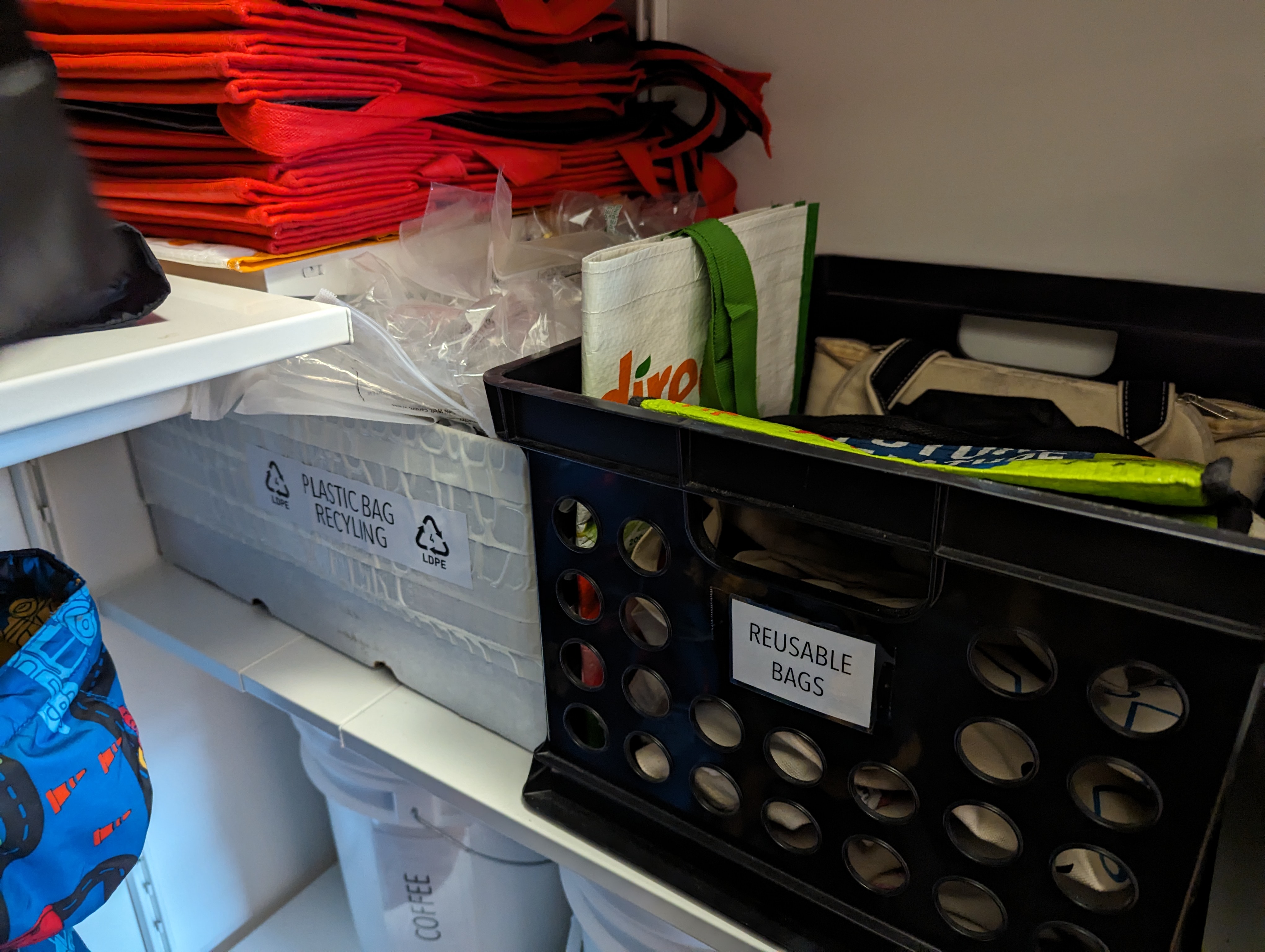
Plastic bag recycling: Do you know the best/most intuitive spot for plastic bag recycling!? Me neither. This spot (in the pantry) was really our only option. Seems to be working GREAT so far to stash (plastic #4) packaging promptly (before properly disposing of it) without getting in anyone’s way!
Reusable grocery bags: It’s easier to stuff ‘em in a bin or on the shelf than actually hang ‘em up. It became easiest when we pared down our bag collection.
Process and Cost
I explored so many organizer options before finally settling on the Ikea Boaxel system, which seemed to maximize our specific space and included an option for a coat rod that did not span wall to wall. I prefer shelves attached directly to the wall, since standing units with front vertical supports block your view, access, and flexibility. The total cost for the entire shelving system was only $167 (plus $10.44 in tax and a drive to Stoughton for late-night pickup). My mom watched our kids for one weekend day, and it was surprisingly easy to take down the existing shelf/rod and get this new system installed in a few hours.

Shilpa Kobren is the Associate Director of Rare Disease Analysis at Harvard Medical School where she focuses on analyzing genomic sequencing data with patient clinical information to derive insights into human diseases. Shilpa lives in an 1890s urban apartment in Cambridge, Massachusetts with her husband and two energetic toddlers. She retains her sense of peace amid the chaos by creating and iteratively improving systems that optimize daily efficiency in her family's constrained living space.